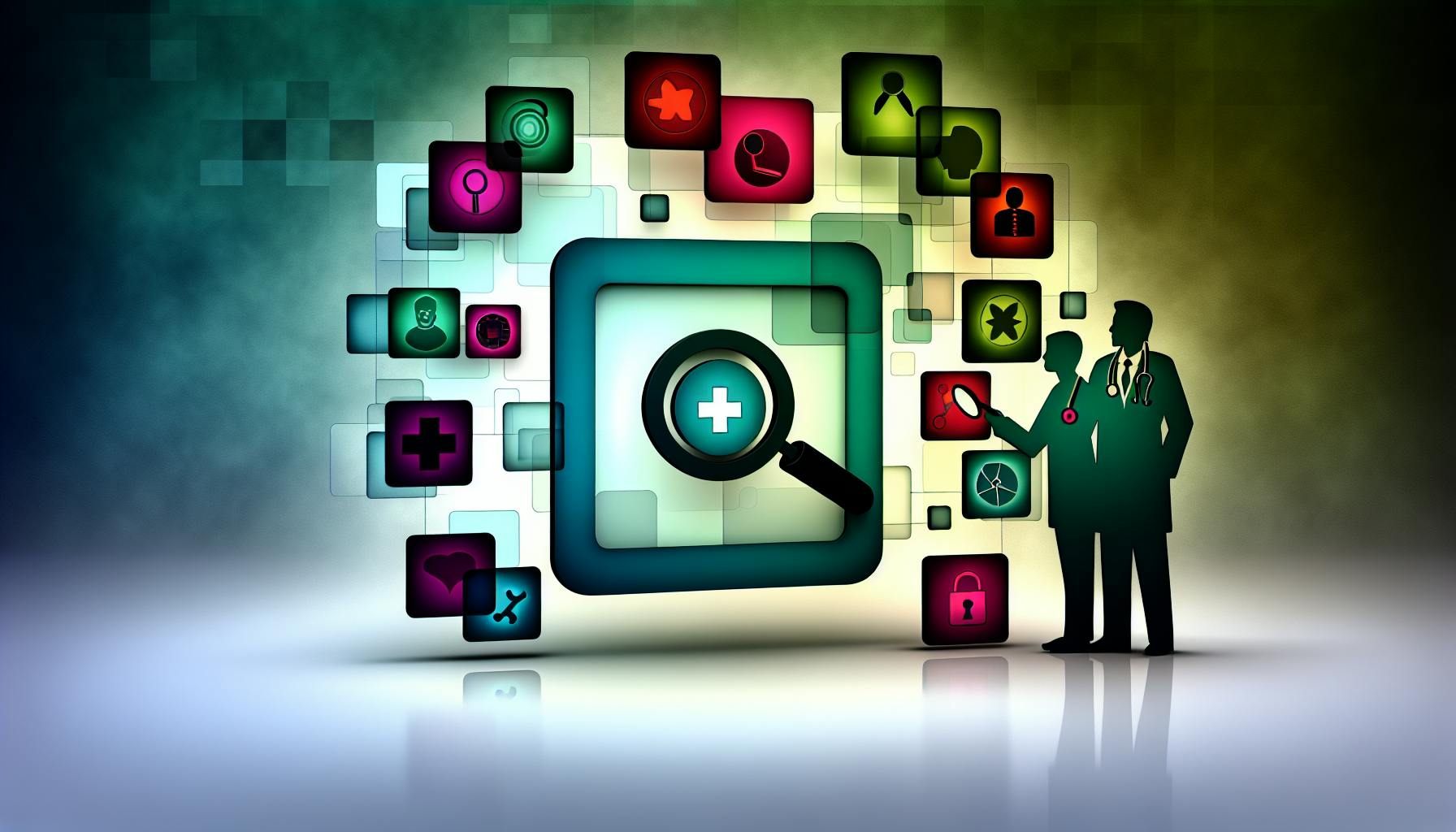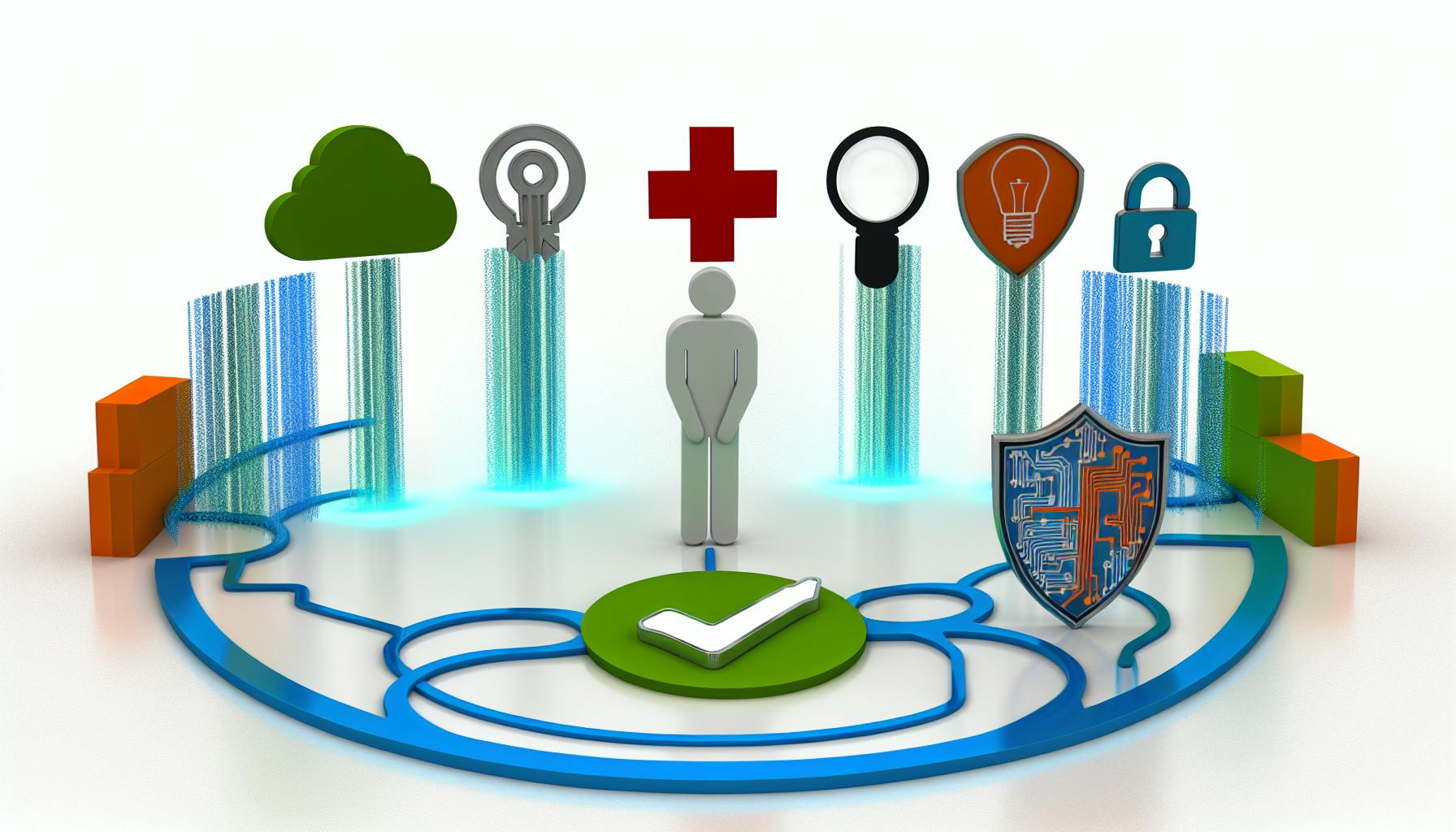Speech recognition technology in healthcare is transforming how patient care is managed, offering a range of benefits from improving clinical documentation to enhancing patient engagement. Here's a quick overview:
- Clinical Documentation: Doctors can verbally update patient records, speeding up the documentation process.
- Care Coordination: Enhances communication among healthcare providers, ensuring seamless patient care.
- Patient Engagement: Allows patients to use voice commands for healthcare services, simplifying access to care.
This technology is paving the way for more efficient, accurate, and personalized healthcare, promising an exciting future with developments like conversational AI assistants and predictive analytics. As speech recognition technology continues to evolve, it holds the potential to significantly reduce clinician burnout, expand access to healthcare, and improve overall patient outcomes.
Front-End vs Back-End Speech Recognition
Speech recognition can work in two ways:
- Front-end - This happens right on your device and gives you answers quickly. But, it needs your device to be pretty powerful.
- Back-end - Your words are sent off to a computer somewhere else that figures out what you said. This can be more accurate but might take a bit longer.
In healthcare, back-end speech recognition is used a lot because getting things right is super important. Doctors can talk, and their words are turned into medical records by powerful computers.
How Accuracy is Achieved
Getting speech recognition to work well depends a lot on training it with a huge amount of spoken words. It learns from hearing different ways of saying things, accents, and medical terms.
The more it listens, the better it gets at understanding complicated medical language and the way doctors speak. Models that use information from many users keep getting better over time.
Starting with general speech and then focusing on healthcare terms helps make these systems really accurate for medical needs. This means they can understand all the special words doctors use and turn spoken notes into written records efficiently.
Key Applications in Healthcare
Speech recognition technology is really making things easier and better in hospitals and clinics. It's mainly used in three big ways: writing down what happens during patient visits, helping doctors work better together, and making it simpler for patients to get what they need.
Clinical Documentation
Doctors and healthcare workers can now talk to record notes about patient visits directly into their computers. This is much faster than writing everything down by hand and helps them spend more time with patients.
Here's why it's good:
- It's faster - Talking is quicker than typing, so doctors can finish their notes right after seeing a patient.
- It's accurate - These tools understand medical terms really well, making fewer mistakes than typing might.
- It works directly with patient records - The notes go right into the patient's file without extra steps.
Care Coordination
Speech recognition helps doctors work together better, especially when a patient is getting care from different places. It can:
- Spot problems in patient information or if someone's health is getting worse, by looking at notes from different doctors.
- Tell doctors about important test results or if a patient needs more attention.
- Help doctors talk to each other quickly about what to do for a patient, using voice messages.
This makes sure patients get consistent care from everyone.
Patient Engagement
This technology also helps patients manage their health easier, with:
- Talking symptom checkers that ask questions and give advice on what to do next.
- Voice commands for making appointments or checking health info without needing to type or call.
- Using voice controls at home to access health services through devices like smart speakers.
These tools make it easier for people to get the help they need, when they need it.
Benefits and Advantages
Increased Clinician Productivity
Using speech recognition technology in healthcare helps doctors and nurses do their paperwork much quicker than typing. They just talk, and the computer writes it down for them. This means they can spend more time with patients and see more people in a day.
Here are some ways it helps:
- Doctors can finish their notes right after seeing each patient, which saves a lot of time.
- Talking lets them give more details easily, so nothing gets missed.
- They can help more patients each day because they're not stuck doing as much paperwork.
Reduced Errors and Improved Outcomes
Speech recognition software for medical transcription is really smart. It knows all the medical terms and gets them right most of the time. This means there are fewer mistakes in the patient's records, which helps doctors give the right treatment.
Other good things include:
- The computer's notes match what the doctor said more closely.
- There are fewer mistakes in putting patient information into the computer.
- Patients get better care because their records are more accurate.
Better Patient Experience
Voice recognition technology in healthcare makes it easier for patients to look after their health. They can use their voice to check symptoms, refill prescriptions, book appointments, and even get virtual care.
Some benefits are:
- Patients can take care of health tasks anytime they need to, without waiting.
- It's easier to use because you can just talk to it like you would to a person.
- People can get medical advice or help no matter where they are.
With speech recognition, handling healthcare through smart devices becomes a lot simpler, making things less stressful for patients.
sbb-itb-527d68c
Implementation Considerations
When putting speech recognition technology to work in hospitals or clinics, there are a few big things to think about to make sure it goes smoothly. Here's what needs attention:
Integration With Clinical Workflows
- It's important that speech recognition tools fit right into the day-to-day activities of healthcare professionals without causing any trouble or slowing things down.
- Work together with the people who will use it to figure out the best way to add it into tasks like writing patient notes or putting in orders.
- Make sure it's easy to use whether you're at a desk or on the go.
Training and User Buy-In
- Training is key so that everyone feels comfortable using it and knows how to get the most out of it.
- Have some experienced users ready to help others and share tips.
- Keep asking users what they think so you can make the system better and solve any issues.
- Show how it makes things faster, improves patient care, and other pluses to encourage everyone to use it.
Data Privacy and Security
- There need to be strong rules for how patient information is handled, stored, and who can see it.
- Use things like encryption and access controls to keep data safe.
- Always be up-to-date with the latest rules on privacy and the best ways to keep data secure.
Phased Deployment and Change Management
- Start using speech recognition slowly, with a small group first.
- Give extra help and training as people get used to it.
- Keep an eye on how things are going before and after it's in place to see the benefits.
- Celebrate any success, offer rewards and keep reminding everyone about the good changes.
Thinking about these things will help make adding speech recognition in healthcare go more smoothly. Working closely with the people who will use it is really important for success. With the right planning and support, speech recognition can make a big difference in how quickly and well healthcare workers can do their jobs.
The Future of Speech Recognition in Healthcare
Speech recognition technology is getting even better and is changing healthcare in big ways. There's a lot more to come, with new tools and improvements that will help doctors and patients even more.
Conversational AI Assistants
Imagine talking to a smart assistant just like you would with a friend. Doctors will be able to ask it about a patient's health history or symptoms, and get useful answers right away. These assistants can make doctors' jobs easier by handling a lot of the paperwork and routine tasks for them.
These smart assistants might also keep an eye on patients' health from home and suggest when it's time to see a doctor. This could help patients avoid going back to the hospital and get help sooner.
Predictive Analytics
The more doctors use speech recognition to talk about patient care, the more information there is for computers to learn from. This can help spot health trends or warning signs that might not be obvious at first.
Computers could help doctors figure out what's wrong with a patient more quickly or predict health problems before they happen, based on what they've learned from lots of other cases.
Reduced Clinician Burnout
Doctors and nurses often get tired because of all the paperwork and admin work they have to do. Speech technology can take care of a lot of that, so they can spend more time with patients. Having quick access to patient information also makes their job less stressful.
Making these tools even better will help healthcare workers focus on caring for patients without feeling overwhelmed.
Expanded Access
As speech recognition technology improves, it will be better at understanding different ways people talk, including those with strong accents or speech issues. This means more people can use it easily.
Also, having the ability to talk to these systems in various languages will make healthcare more accessible to people who speak different languages. They'll be able to express their health concerns in their own language.
Conclusion
Speech recognition is already doing amazing things in healthcare, and there's a lot more to come. With more data for computers to learn from and smarter algorithms, we'll see new tools that can talk, offer advice, and understand health information like never before. This technology is on its way to making healthcare more personal, proactive, and caring.
Conclusion
Speech recognition technology has really changed how things work in healthcare. It's like having a helper that does all the boring paperwork, so doctors and nurses can focus more on taking care of their patients.
Here are some of the main ways speech recognition is used in healthcare:
- Clinical documentation - Doctors can just speak to update patient records. This saves a lot of time that used to go into writing everything down.
- Care coordination - Systems that can talk to each other mean that patient info is easily shared between different doctors. This helps make sure that everyone involved in a patient's care knows what's going on.
- Patient engagement - With voice commands, patients can easily do things like set up doctor's appointments, refill their prescriptions, and check on test results. This makes getting healthcare stuff done a lot easier.
Looking ahead, speech recognition could do even more cool stuff, like:
- Help doctors by suggesting what might be wrong with a patient and what to do about it.
- Use lots of data to spot health problems before they get serious.
- Understand different languages, so more people can use it no matter what language they speak.
With more improvements, speech technology could help doctors and nurses do their jobs even better, make things less stressful for them, and make healthcare easier to get for more people. This could lead to everyone being healthier and happier.


